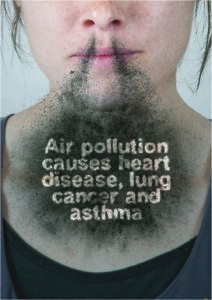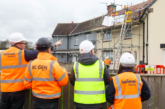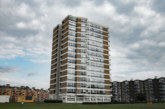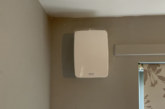 Wendy Thomas, Residential Product Manager at Nuaire, discusses the need to tackle air pollution inequality in our cities.
Wendy Thomas, Residential Product Manager at Nuaire, discusses the need to tackle air pollution inequality in our cities.
Every year the Government’s Chief Medical Officer (CMO) is required to produce a report on the state of the public’s health. The 2017 report, released in 2018, focused on air pollution as a major threat to public health and called for tougher standards to combat wide ranging health challenges. Clearly prevention is better than cure, so the long-term goal has to be to reduce air pollution, but in the meantime what should and could we be doing to protect those most at risk?
Cause for concern
It’s been over 60 years since the Clean Air Act, but once again air pollution is making headline news, with 44 UK cities identified by a recent World Health Organisation (WHO) report as having air too toxic to breathe safely.
Today the focus is on particulate matter, notably PM₁₀ and PM₂.₅, and NOx, the collective name for Oxides of Nitrogen (with NO and NO² having the most effect on the environment and human health). The main culprit for NOx emissions is motor vehicles, in particular diesel engines. The WHO annual mean target for NO² is 40 micrograms per cubic metre but in 2015, only six of the 43 UK air quality assessment zones met the annual mean limit value for NO².
Impact of air pollution
Vulnerable groups, such as the elderly, children and those with underlying medical conditions (especially asthma), are at a disproportionately high risk of respiratory problems. But, according to the CMO’s 2017 Report, there is both growing evidence and consensus that deprived groups in England are exposed more to air pollution and are therefore likely to face a greater health impact.
Pollution sources and higher concentrations of ambient pollution are typically found in more socially disadvantaged areas. In 2001, of the 2.5 million people resident in areas where the annual mean NO² limit value was exceeded, over half were in the poorest 20% of the population; by 2011 the exceedance population had fallen to 0.6 million due to overall improvements in air quality, but 85% of this population was in the poorest fifth.
Protecting the most vulnerable
Reducing levels of particulate matter and NOx are essential in our cities and steps are being taken, but it’s a slow business as it requires major changes such as building schools away from main roads and phasing out diesel cars. In the meantime, we need to take measures to protect those most at risk and not just those who can afford it. It’s a well-quoted figure, but worth restating here: every £1 spent on improving homes saves the NHS £70 over 10 years. Investing in our housing stock, especially our social housing where some of our most deprived live, is essential for our wellbeing.
Filtering out pollutants
Carbon filtration remains one of the best options we have for removing pollutants from our homes. Pollutants are attracted to the surface of the carbon and absorbed. Incorporating a carbon filter into a standard MVHR (Mechanical Ventilation with Heat Recovery) supply air valve that is part of a ducted ventilation system is an effective way to do this as long as access to the filter is quick and simple. Nuaire’s IAQ-VALVE, for example, has a simple ‘twist-and-clip’ bayonet fixture which enables quick release for easy maintenance that can be carried out without the need for tools every two years.
Most MVHR systems however, are designed for new-build properties, which is fine for the 170,000 new homes built each year, but what about the 27 million existing homes in the UK? Retrofit options are few and far between, but that is beginning to change as manufacturers react to demand. MVHR systems remain impractical for existing properties as they require extensive ducting in voids etc. where there generally is not any space and it would result in huge disruption and refurbishment. Instead, the industry has turned to Positive Input Ventilation (PIV) incorporating a carbon filter.
PIV units, traditionally used as a cost-effective method of eliminating moisture from the home, gently pressurise a dwelling to expel stale and humid air through natural ventilation points; these are very common in older properties as most of use probably know. PIV units can be mounted either in the loft area of a house, or a hallway cupboard of a flat. By adding a powerful carbon filter inter a PIV unit, existing properties can be benefit from not only reduced concentration but reduced pollution also. In the case of our own Noxmaster system, it removes up to 99.5% of NO² and up to 75% of PM2.5.
Whilst most existing properties can benefit from this combined PIV and carbon filtration system, it is social housing landlords — who provide a wide range of vital welfare services to their local communities — that can use it to make the biggest difference to the most deprived and vulnerable members of our society.
It’s time for action when it comes to air pollution and we have to look at both the long and short-term solutions. Reducing air pollution is the goal but can we really afford to wait that long? In the meantime, some of the most vulnerable members of our society are slowly being poisoned in their homes without even knowing it.









